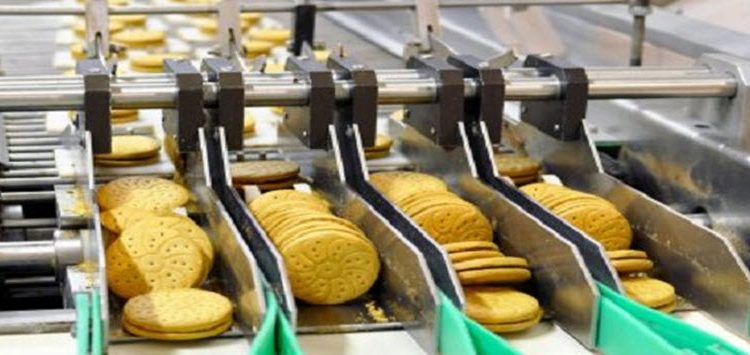Food Processing Equipment: From Raw Ingredients to Delicious Products
What Is Food Processing?
Food processing is the transformation of raw, otherwise unpalatable ingredients, into food, or of one form of food into another. From the moment fire was discovered, humans have been processing food. Originally, food was processed in order to make it safer and more palatable and to extend its life. This involved simple food processing methods such as cooking, drying and fermentation. But this all changed after the Industrial revolution.
Thanks to technological breakthroughs, processed food began to be produced on a large commercial scale. For the first time, some of the methods of food processing could be done with the help of machines. Food processing machines helped speed up production, enhance the flavour of food products and add years to their shelf-life. Additionally, this led to a whole new array of nourishment options such as canned foods, soft drinks and pasteurized milk.
Nowadays, food is processed at various levels – from our home kitchen to restaurants, bakeries and on a much larger industrial scale. And along with the progress in storage and transportation of food, modern humans have unlimited food choices for a more varied diet. Now we get to be picky about our food and also get to receive all the nutrients needed for good health – something that our ancestors couldn’t do a couple of centuries ago.
What Are the Methods of Food Processing?
There are many different methods used in food processing. The most common methods of food processing are cleaning, slicing, cutting, baking, roasting, boiling, curing, fermenting, mixing, frying, steaming, grinding, marinating. Some products require little to no processing, like for instance roasted walnuts which only need to be cleaned and roasted. And others are subjected to many processing methods in order to be safe to eat and achieve the desired flavour, look and shelf-life.
What Types of Equipment Are Used in Industrial Food Processing?
As you can notice, after the Industrial revolution, the methods of food processing haven’t changed a lot. However, what did change dramatically is the equipment used in industrial food processing. Modern food processing equipment consists of a variety of automated machines and complex instruments that allow businesses to precisely control and observe the production process. This means that modern food processing operations leave no room for mistakes. Let’s take a look at the different types of food processing equipment and their importance for the quality of the final product.
Preparation Equipment
Every production process starts with preparing the raw ingredients for processing. Whether you’re making cookies, chocolate or cereal, you first need to remove potential contaminants (soil, insects, oil) and separate the quality ingredients from the substandard or undesirable material. With that beings said, the preparation stage includes such processes as grading, sorting, cleaning and peeling the raw material.
The preparation process starts by assessing the quality of the food matter with the help of laboratory equipment and image processors. The material that passes the tests moves onto the sorting stage during which disc separators, sieves and machine vision sorting systems are used. Next comes the cleaning stage which involves equipment such as flotation tanks, spray washers, separators, ultrasonic cleaners and sterilisers to remove impurities and pathogens.
If any material needs to be peeled or skinned, this is done with some of the following machines: stationary/rotating blades (knife peeling), conveyors and furnaces (flame peeling), and carborundum abrasive rollers (abrasion peeling).
Mechanical Processing Equipment
Mechanical processing equipment is used to reduce, homogenise or otherwise change the physical form of the ingredients. This way, manufacturers prepare the food matter for the subsequent processes. This is a crucial stage for the overall quality, texture, shape and edibility of the final products. Depending on the type of products, there are many different machines that can be used during the mechanical processing stage.
For instance, if you’re producing baked goods such as bread, cookies or croissants or confectionery goods such as chocolate bars, you will need to use dough/paste mixers to blend several ingredients and achieve the right texture. After this, you will need to move to equipment that will separate and mould the mixture into multiple pieces with identical size and shape. When it comes to baked goods, the most common machine used for this is a dough divider and rounder. However, there are other, more specialised machines as well, like for instance, bread moulders and pie and biscuit formers. On the other hand, confectionery and chocolate business use equipment such as confectionery moulders and enrobing machines.
Heat Processing Equipment
The heat processing stage utilises methods such as blanching, baking, roasting, frying, dehydration, pasteurisation and sterilisation. In addition to physically altering the food material through exposure to heat, these methods also cause chemical, biochemical and biological changes. And these changes directly affect the taste and texture of the final product and help preserve it by destroying or inhibiting the microorganisms and enzymes that cause spoilage. Again, depending on the type of product, there are many different machines that can be used during the heat processing stage.
Baking is used for the production of bread, biscuits, crackers and other types of products made of dough. The method of baking employs commercial-grade ovens. There are several different types of ovens for commercial use: direct heating ovens, indirect heating, batch ovens, continuous and semi-continuous ovens. Roasting uses heat similar to baking. However, it’s only suitable for meat, nuts and vegetables. There are special roasting ovens designed for industrial use.
Blanching is the thermal processing of fruits and vegetables. It uses heated water or steam to inhibit spoilage-causing enzymes and reduce the number of microorganisms. This method can be performed by steam blanchers or hot water blanchers.
The purpose of dehydration in food processing is to remove water in the food material in order to produce a solid product with low water content. The reduced water content gives the product a unique flavour, and most importantly, enhances its shelf-life. Some of the machines used for dehydration are convective dryers, vacuum dryers, contact dryers and freeze dryers.
Another way to reduce the moisture content of food material is by frying. Not only does this process reduce the water content to improve shelf-life, but it also gives the product a surface crust and influences its flavour. For this purpose, food processing facilities use batch fryers or continuous fryers.
Wine, beer, dairy, fruit/vegetable-based and egg products need to be pasteurised. Pasteurisation is the process of heating food material under medium temperatures (70-100oC) to deactivate dangerous and spoilage-causing microorganisms. However, this process only produces food with a limited shelf-life. Pasteurisers can be in-container or continuous flow.
And finally, sterilization is implemented in order to give products years of shelf-life. Sterilization is the heating of food material under temperatures higher than 100oC to kill all enzymes and microorganisms. For this purpose you can use an in-container steriliser or a continuous flow steriliser.
Preservation Equipment
The aim of the preservation stage is to prevent spoilage and increase the shelf life of the products. While many of the heat processing methods have preservative qualities, sometimes this isn’t enough and additional treatment is needed. In those situations, chemical preservatives and food irradiation equipment such as isotopes and electron accelerators are used. Refrigeration is also a form of preservation equipment which is used during the storage stage. This includes equipment such as chillers, freezers, mechanical refrigerators and cryogenic systems.
Packaging Equipment
And finally, packaging is the last stage of food processing. Although the packaging doesn’t significantly affect the taste of the product, it helps prolong its shelf-life and also makes it more attractive to consumers. There are many forms of food packaging such as jars, bottles, boxes, cans, etc. Some of the machines most commonly used for food packaging are volumetric fillers, net-weight/gross-weight fillers, seamers, form-fill seals, checkweighers and printers.






No Comment